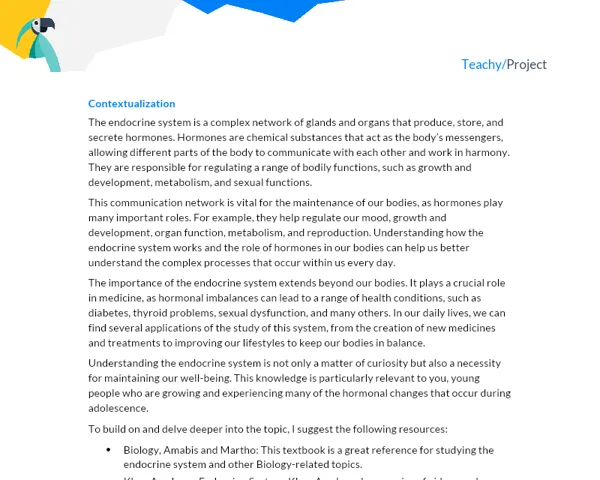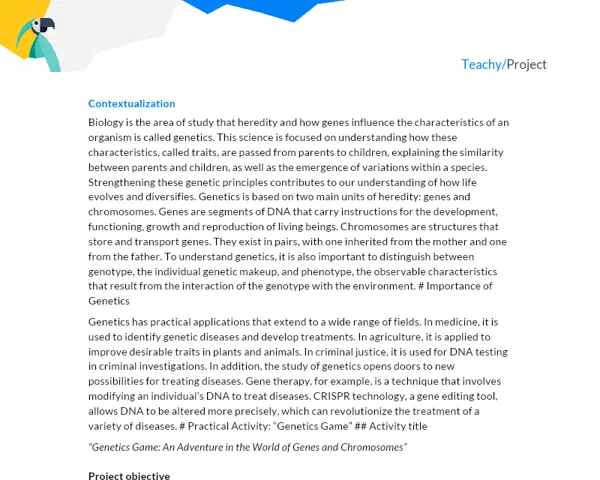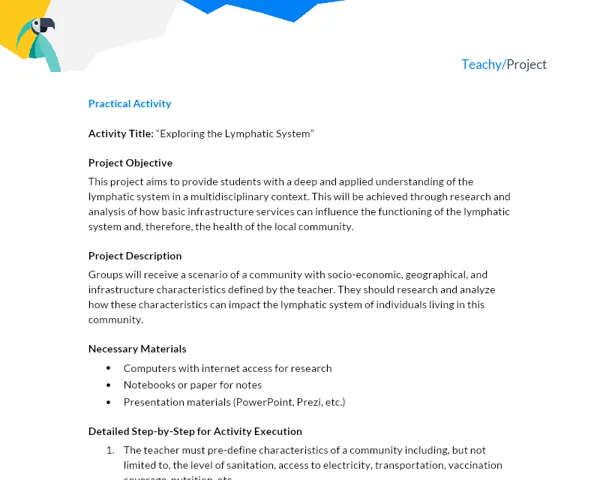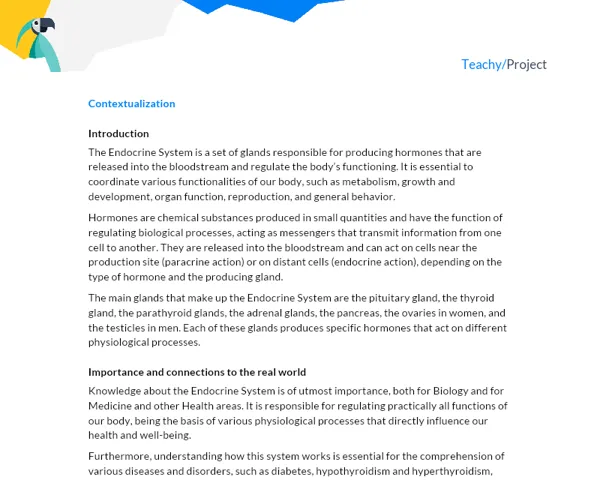Contextualization
The circulatory system, also known as the cardiovascular system, is extremely vital for the life of all living beings that possess this system. Composed of the heart and blood vessels, this system is responsible for carrying nutrients, respiratory gases, hormones, and other important substances to all parts of the body. It is also the body's defense, filtering, and purification mechanism, being essential for life maintenance.
By studying the circulatory system, you will not only understand its composition and function, but also how it integrates into our daily lives and society as a whole. From simple practices like measuring heart rate after physical activity, to serious complications like cardiovascular diseases, which are the leading cause of death worldwide, the significance of this system for health and well-being is undeniable.
The complexity and importance of the circulatory system make it a perfect topic for interdisciplinary study. In addition to its relevance in biology and anatomy, it also plays a crucial role in the fields of physics (hemodynamics), chemistry (blood composition), mathematics (fluid flow models), and much more. By exploring this topic, you will have the opportunity to enhance your technical and socio-emotional skills, such as time management, communication, and problem-solving.
To deepen your studies, we recommend the following reliable sources:
- Book: "Human Anatomy and Physiology" by Elaine N. Marieb, Katja Hoehn
- Website: Khan Academy, module on the circulatory system (link)
- Video: YouTube, Channel "Biologia com Samuel Cunha" (link)
- Website: Brasil Escola, article on the circulatory system (link)
Remember, knowledge is a collective construction. Collaborate and learn from each other at every stage of this project. Good luck and have fun!
Practical Activity
Activity Title: Heart, A Perfect Machine: Exploring the Circulatory System and its Influence on Society
Project Objective:
The objective of this project is to deeply understand the human circulatory system, its functions, anatomy, physiology, and the influence of external factors, such as infrastructure and basic services, on its functionality. Additionally, the project aims to develop research, collaboration, communication, and critical analysis skills among students. This project will be carried out by groups of 3 to 5 students and will have a total duration of approximately 50 hours.
Detailed Project Description:
In this project, students will conduct in-depth research on the human circulatory system, including its anatomy, physiology, and the influence of various external factors. They will also explore the connection between this organic system and aspects of daily life, such as infrastructure, basic health services, and physical activities.
For a more comprehensive and playful learning experience, it is proposed that students create a three-dimensional (3D) model of the circulatory system. This model should illustrate the heart, veins, arteries, and smaller blood vessels, as well as other parts of the system. Students should also prepare an oral and visual presentation about the project, explaining the circulatory system and how it interacts with other systems and aspects of daily life.
Required Materials:
- Materials for building the 3D model (paper, modeling clay, glue, paint... be creative!)
- Computer with internet access for research
- Text and image editing programs for presentation preparation
Detailed Step-by-Step for Activity Execution:
-
Theoretical research (15 hours): Research the circulatory system, its components, and functions. Also, study its relationship with basic services, such as sanitation and healthcare. Use the recommended references and any other reliable sources you find.
-
Creation of the 3D model (15 hours): Based on the research, create a 3D model of the circulatory system that shows all its main parts and how they are connected.
-
Presentation preparation (15 hours): Prepare a presentation on the circulatory system and the model created by you. The presentation should explain the theoretical aspects studied and how they apply to the 3D model.
-
Review and rehearsal (5 hours): Review the project and practice the presentation to ensure that everything goes smoothly on the day of presenting to the class.
At the end of the project, students should compile the information into a report that includes:
-
Introduction: Provide context for the theme, its relevance and real-world application, as well as the objective of this project.
-
Development: Explain the theory behind the circulatory system, detail the activity - construction of the 3D model, indicate the research methodology used, present and discuss the results obtained - learnings about the circulatory system and its relationships with other aspects of life and society.
-
Conclusions: Summarize the main points, explaining the learnings obtained and the conclusions drawn from the project.
-
Bibliography: Indicate the sources you relied on to work on the project such as books, web pages, videos, etc.
This written document must be submitted along with the 3D model and will be part of the final project evaluation.



